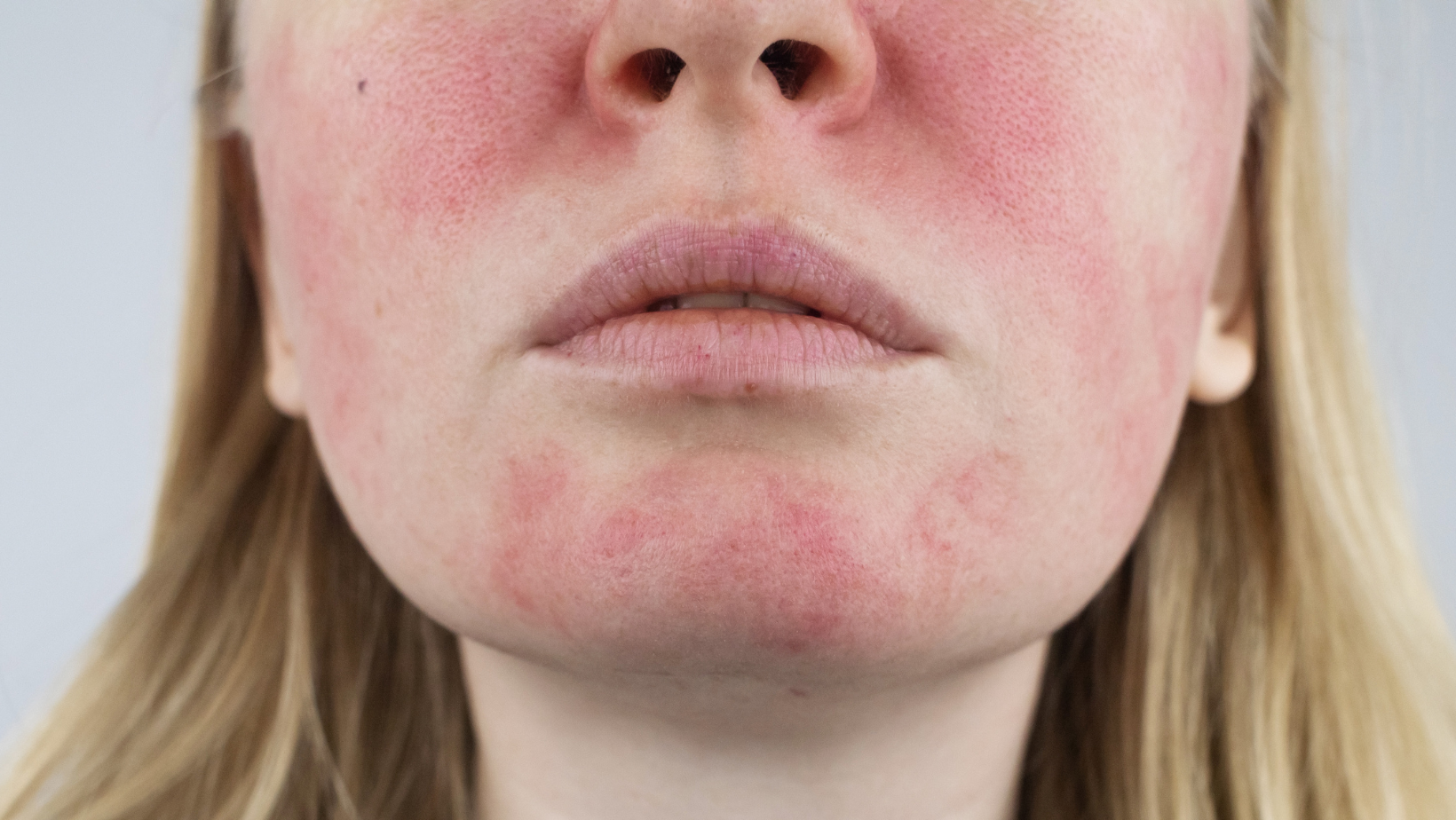Category
Rosacea is a chronic skin condition characterized by redness, visible blood vessels, and sometimes pimples and bumps on the face.

Have any questions?
If you have any questions, feel free to contact us at [email protected]. A member of our support team will help you shortly.
Share this blog
Fatigue
Energy
Stress
Sleep
Rosacea is a chronic skin condition characterized by redness, visible blood vessels, and sometimes pimples and bumps on the face. While the exact cause of rosacea remains unknown, understanding its symptoms, identifying triggers, and adopting appropriate skincare strategies are crucial for managing this common yet often misunderstood condition.
The most noticeable symptom of rosacea is persistent facial redness, often resembling a blush or sunburn. This redness typically occurs on the central face, including the cheeks, nose, forehead, and chin.
Over time, small blood vessels may become visible, creating a network of red lines on the face. This condition, known as telangiectasia, is a common feature of rosacea.
Some individuals with rosacea may develop red, pus-filled bumps that resemble acne. These can be tender and may come and go.
Ocular rosacea affects the eyes, causing symptoms such as redness, burning, dryness, and the sensation of a foreign object in the eye. In severe cases, it can lead to vision problems.
Exposure to sunlight is a common trigger for rosacea flare-ups. Protecting the skin with a broad-spectrum sunscreen with a high SPF and wearing a wide-brimmed hat are essential.
Extremely hot or cold weather can exacerbate rosacea symptoms. Individuals with rosacea should take precautions, such as using a humidifier in dry conditions and avoiding overheated spaces.
Consuming spicy foods and hot beverages can trigger flushing in some individuals with rosacea. Identifying and avoiding specific food triggers can help manage symptoms.
Alcohol and caffeinated beverages may cause vasodilation, increasing blood flow to the skin and exacerbating redness. Moderating or avoiding these substances may be beneficial.
Emotional stress is known to trigger rosacea flare-ups. Stress management techniques such as meditation, deep breathing, and yoga can help reduce the impact of stress on the skin.
Harsh skincare products containing alcohol, fragrances, or other irritating ingredients can worsen rosacea symptoms. Opt for gentle, fragrance-free products designed for sensitive skin.
Choose a mild, fragrance-free cleanser to wash the face. Avoid harsh scrubbing or hot water, as these irritate the skin. Pat the face dry with a soft towel.
Moisturizing is crucial for individuals with rosacea, as dry skin can worsen symptoms. Opt for a hypoallergenic, fragrance-free moisturizer to keep the skin hydrated.
Sunscreen is a non-negotiable part of a rosacea management routine. Use a broad-spectrum sunscreen with SPF 30 or higher, even on cloudy days. Reapply regularly, especially if spending extended periods outdoors.
Steer clear of skincare products that contain alcohol, fragrances, or other potential irritants. Opt for products labelled as suitable for sensitive skin.
Dermatologists may prescribe topical medications such as metronidazole or azelaic acid to reduce inflammation and redness associated with rosacea. These should be used under medical supervision.
In more severe cases, oral medications may be prescribed, including antibiotics and other drugs targeting the immune system. Consultation with a dermatologist is essential to determine the most appropriate treatment plan.
Dermatological procedures like laser and light therapies can help reduce redness and visible blood vessels. Trained professionals should perform these treatments.
Applying cool compresses to the face or a cool mist can help soothe irritated skin during flare-ups. Avoid hot baths or showers, as they can exacerbate symptoms.
While rosacea is a chronic condition without a cure, effective management is possible through understanding symptoms, identifying triggers, and adopting a gentle skincare routine. Lifestyle modifications, such as sun protection, avoiding triggers, and stress management, are crucial in minimizing flare-ups. Seeking guidance from a dermatologist allows for a tailored treatment plan, which may include topical or oral medications, laser therapies, and other interventions. By taking a proactive and personalized approach, individuals with rosacea can better control their symptoms and maintain healthier, more comfortable skin.